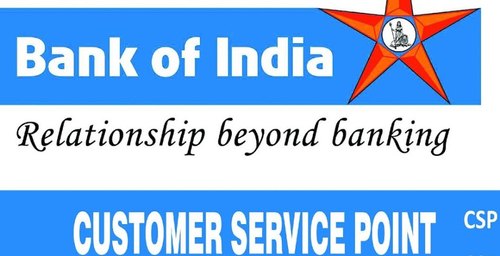CSP stands for “Customer Service Point”. It is a banking term used to describe a location, usually run by a third-party agent, where customers can perform basic banking transactions such as deposits, withdrawals, and account balance inquiries. CSPs are commonly used in areas where traditional banking services are not easily accessible, such as rural or underbanked areas. They are also used to supplement the services of traditional bank branches and ATMs, providing customers with greater access to banking services.
CSP (Customer Service Point) service is a type of banking service that is provided by third-party agents, also known as business correspondents or banking correspondents. These agents are appointed by banks to provide basic banking services to customers in areas where traditional banking services are not easily accessible, such as remote or rural areas.
CSP services typically include the opening of bank accounts, deposit and withdrawal of cash, fund transfers, balance inquiries, and other basic banking transactions. These services are provided through handheld devices or point-of-sale (POS) terminals provided by the bank, and the agent earns a commission for each transaction they carry out.
CSP services have proven to be a very effective way to extend banking services to remote areas, and they have helped to improve financial inclusion by bringing banking services to people who previously had no access to them.
The exact list of services provided by a Customer Service Point (CSP) can vary depending on the bank and the specific services offered by the third-party agent. However, here are some common services that are typically offered through CSPs:
- Account opening: Agents can assist customers in opening bank accounts, including savings accounts, current accounts, and fixed deposit accounts.
- Cash deposit and withdrawal: Agents can accept cash deposits into customer accounts and also facilitate cash withdrawals.
- Money transfer: Agents can facilitate domestic money transfers between bank accounts, including within the same bank or to other banks.
- Balance inquiry: Customers can check their account balance through the CSP.
- Mini statements: Agents can provide customers with mini-statements that show the recent transactions on their accounts.
- Aadhaar-enabled payment system (AEPS): AEPS allows customers to carry out banking transactions using their Aadhaar number and biometric authentication. CSPs can facilitate these transactions.
- Bill payment: Customers can pay their utility bills, mobile recharge, DTH recharge, etc. through CSPs.
It’s worth noting that the exact list of services can vary depending on the bank and the specific CSP.
The exact list of documents required for CSP (Customer Service Point) onboarding can vary depending on the bank and the specific requirements of the third-party agent. However, here is a list of commonly required documents:
- PAN Card: PAN card is required for the identification of the third-party agent or the entity who is providing the CSP service.
- Aadhaar Card: Aadhaar card is required for identity verification and KYC (Know Your Customer) purposes. Aadhaar is also required for AEPS (Aadhaar Enabled Payment System) transactions.
- Photographs: Recent passport size photographs of the third-party agent or the entity providing the CSP service.
- Address Proof: Documents such as electricity bill, telephone bill, or lease agreement can be used as address proof.
- Business Proof: Documents such as Shop Establishment Certificate or GST registration certificate can be used as business proof.
- Bank Account Details: The bank account details of the third-party agent or the entity providing the CSP service.
- Mobile Number: A mobile number linked with Aadhaar is mandatory for AEPS transactions.
- Experience Certificate: Some banks may require the third-party agent or the entity providing the CSP service to have prior experience in banking or financial services.
It’s important to note that the list of documents required can vary depending on the bank and the specific CSP program. It’s best to check with the bank or the third-party agent for a complete list of requirements.
Axis Bank CSP (Customer Service Point) is a program offered by Axis Bank to extend banking services to remote and rural areas through third-party agents or business correspondents. These agents are appointed by Axis Bank to provide basic banking services to customers in areas where traditional banking services are not easily accessible.
Axis Bank CSP services typically include account opening, cash deposit and withdrawal, money transfer, balance inquiry, mini statements, and other basic banking transactions. These services are provided through handheld devices or point-of-sale (POS) terminals provided by the bank, and the agent earns a commission for each transaction they carry out.
To become an Axis Bank CSP, an individual or entity needs to meet the eligibility criteria set by the bank, which includes having a physical business location, a minimum net worth, and a good credit history. The applicant also needs to provide the necessary documentation and complete the required training before becoming a CSP.





